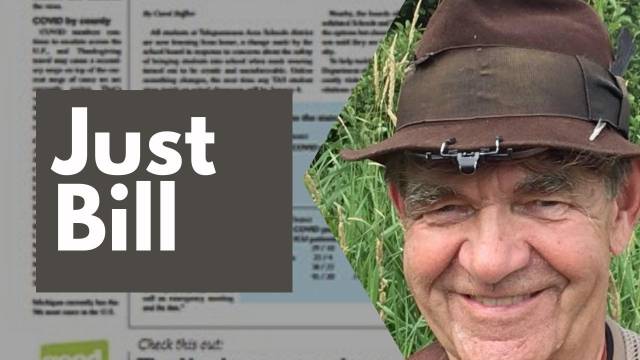By Bill Diem
When the conversation turns to the Cleveland baseball team, I have a hard time not talking about the Tribe. I am well aware of the pressures that led to changing the name Indians to Guardians, but I don’t agree. Loving as I do the Upper Peninsula and its history going back thousands of years to the retreat of the last glacier, I have never thought the Newberry Indians were badly named.
When I was working for Frank Gordon the summer of 1970, a stump was pulled out of the earth where the Curtis Post Office now is, and lo and behold, Frank found an arrowhead where the stump was.
When I was a Boy Scout in Ohio, we had the Order of the Arrow. When I was a young father of my daughter, Alice, we had Indian Princesses campouts for fathers and daughters. Our tribe was the Kickapoos, which Mike Duffy named thinking of a character in Al Capp’s Sunday cartoons, but the Kickapoos are indeed a tribe of people.
Today there is a certain amount of “wokeness” in the discussions over using names like Indians or Braves. Are they echoes of colonialism and the genocide of 19th Century America? When I was a kid there was no question about these being slurs against peoples. But as we got older, yes, the Chief Wahoo cartoon used by the Cleveland Indians was nothing to be proud of if you were Ojibwa or Sioux.
One recent day I had some time free in Paris, and I went to an exhibit about Art Deco, the “look” that dominated architecture and decoration in the ‘20s and ‘30s.
The American pilots who joined the French Air Force before the United States entered World War I had their own division, the Lafayette Escadrille. According to the exhibit, “These pilots, led by the young Norman Prince who was living in Paris, chose as their insignia a Native American chief’s head, which they painted on their fuselage. It symbolized their determination and courage and became, in the 1920s, a recurring motif in the decoration of Art Deco skyscrapers, train stations, and public buildings.”
The Sioux, who fought valiantly to save their way of life against a United States that wanted the land itself, did indeed represent courage and determination. The choice by the young pilots, only a few decades after the Plains Indians were crushed, was all positive and honor-bound. Wikipedia says that 224 Americans served in the corps, and 51 were killed in combat. These young Americans were risking their lives and they chose for their symbol men who knew all about risk and courage and determination.
I think there was a period of wokeness a hundred years ago, when America had Indian head nickels and stylized heads of chiefs on buildings and trains and skyscrapers. But that wokeness was waking up to the damage white America had done.
“Go Indians. Beat those Eagles.”












